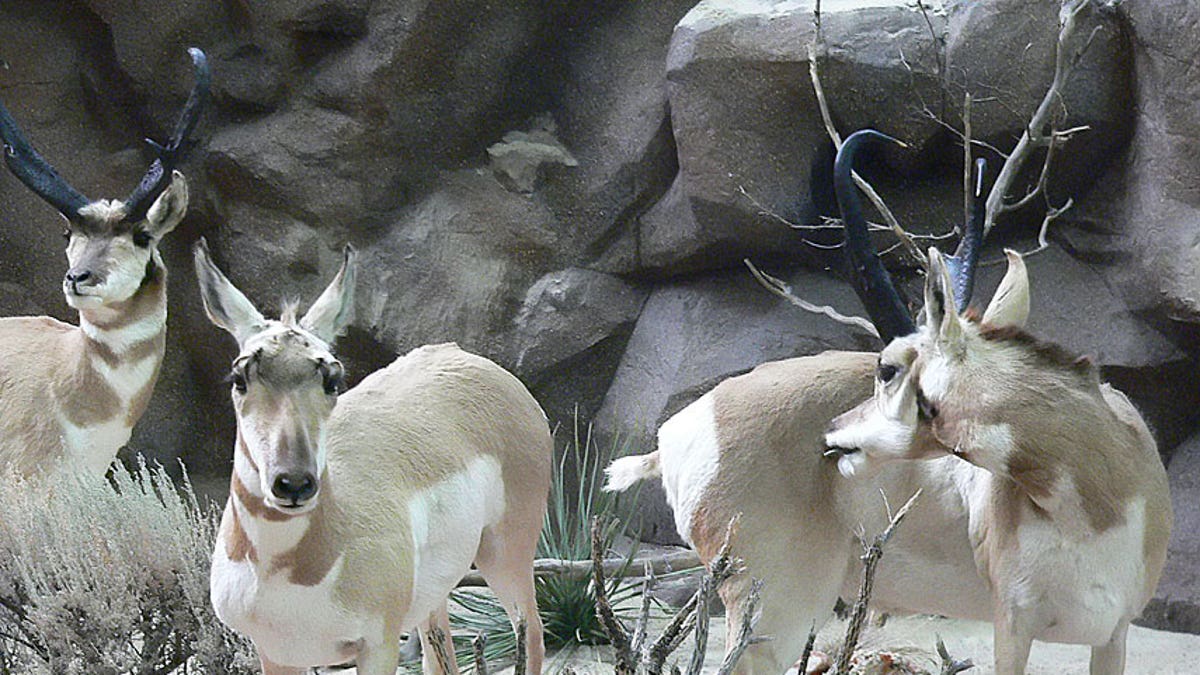
(Flickr/mharrsh)
The 2016 presidential campaigns have once again introduced the concept of building a wall along the United States' southern border with Mexico.
It’s an idea that has provoked many emotional reactions and discussions around the immigration debate.
But there’s more to consider than just the human implications of a border wall. What’s absent from our current dialogue is any regard for the impact a “Great Wall of America” would have on the wildlife that know no boundaries and pledge no national allegiance.
Border reinforcements are meant to control the migration of people between countries, yet they also cut off wildlife from the food, water and mates their populations need to survive and grow.
Border reinforcements are meant to control the migration of people between countries, yet they also cut off wildlife from the food, water and mates their populations need to survive and grow.
More than 600 miles of walls and fencing have been constructed in all four southern border states, and the region is already starting to feel the environmental effects of these barriers – including desertification, erosion, flooding, pollution and groundwater depletion.
But what’s most concerning about the possibility of a border wall is the threat it poses to biodiversity, a central component of the ecosystems that sustain human lives and economies.
Dr. Gerardo Ceballos, professor at the Instituto de Ecología, Universidad Nacional Autónoma de México, has found that a complete divide could become “a major biogeography barrier” for animal species like the jaguar, bison, pronghorn antelope, ocelot and black bear.
Fences and walls significantly hamper animals’ ability to move, isolating populations and limiting their ability to grow and expand their gene pool.
At the same time that most businesses are discovering the value of increasing human diversity among their employees and customers, our world’s wildlife biodiversity is diminishing at an alarming rate: a loss of 52 percent of global biodiversity since 1970 according to a 2014 study by the World Wildlife Fund. This challenges the “ecosystem services” that sustain us — from the provision of clean water and air through the availability of raw materials and food supplies.
Furthermore, the challenges presented by climate change—including shifts in food source distribution—place even greater importance on the ability of wildlife to adjust their ranges.
Like people, many animals must move if they’re to better their chances of survival, growth and opportunity. And so we have a responsibility to consider how our actions, through the policies we debate, develop and implement, can alter life — not only for the wildlife involved, but also for future human generations.
We are learning more every year about the complexity of the biological constructs that make our natural world “work,” and an expanded border wall places the future we will bequeath to our grandchildren at risk.
There is hope for the border region’s animals, if we can find ways to share smart, thoughtful approaches across the geographic divide.
Heroes like Dr. Ceballos are working hard along with the global conservation community to develop solutions that can be employed not only south of the border, but in every state and country.
From wildlife corridors to elephant underpasses, it’s up to us to work together to arrive at realistic policies that strike a balance between the needs of humans and the survival of wild animals.
But it all starts with opening our minds—and borders—to ideas that truly work, no matter what country they come from.
Our policymakers and presidential candidates alike must recognize that we are a part of this world, and trying to become apart from the rest of it is not a viable solution in the long-term.
We must create a new focus on what our countries share in common – our biodiversity, our ecosystems and our planet – rather than what makes us different. Then, and only then, can we begin to have a meaningful dialogue around flexible solutions that can benefit humans, ecosystems, and wildlife on both sides of the border.
